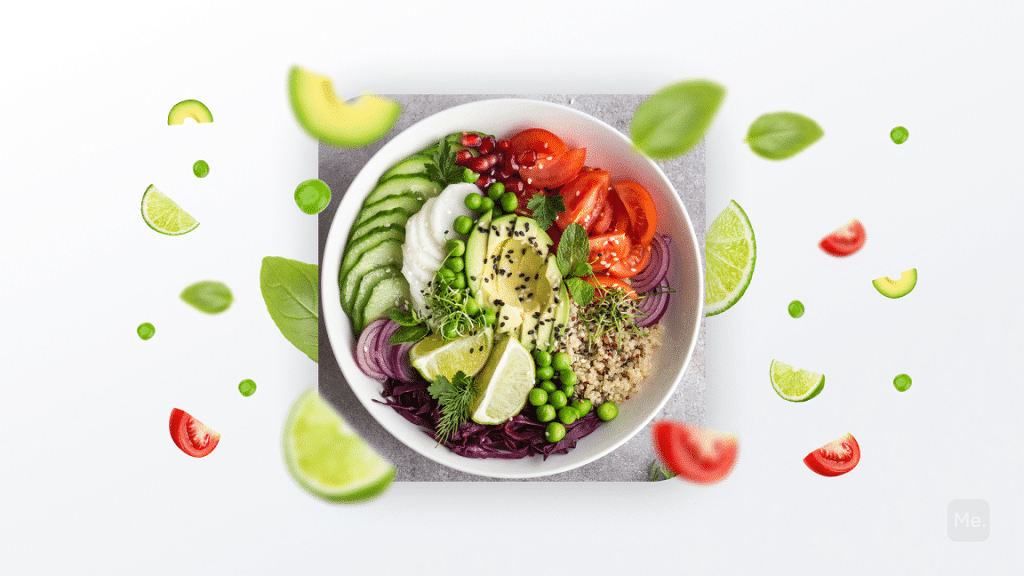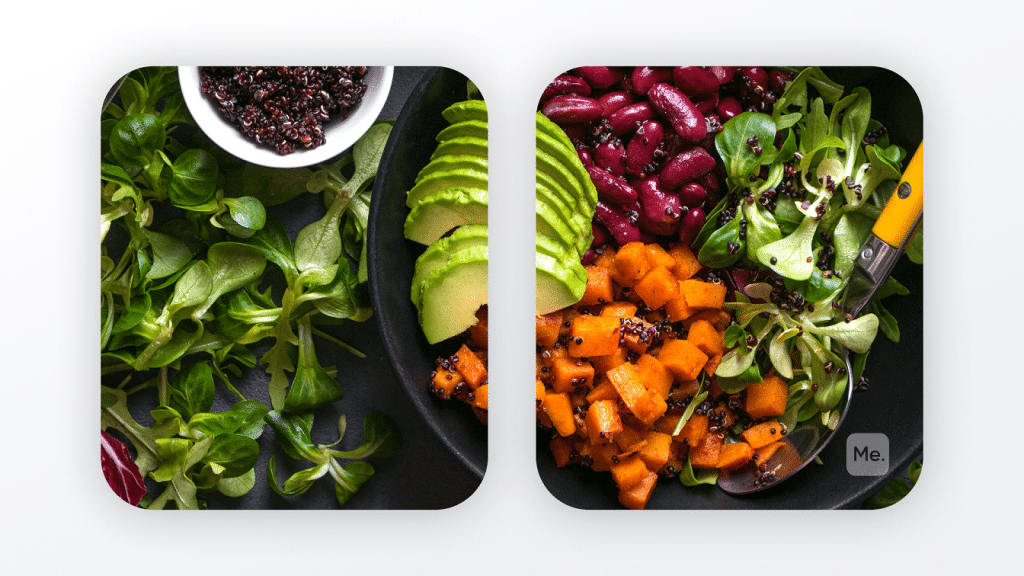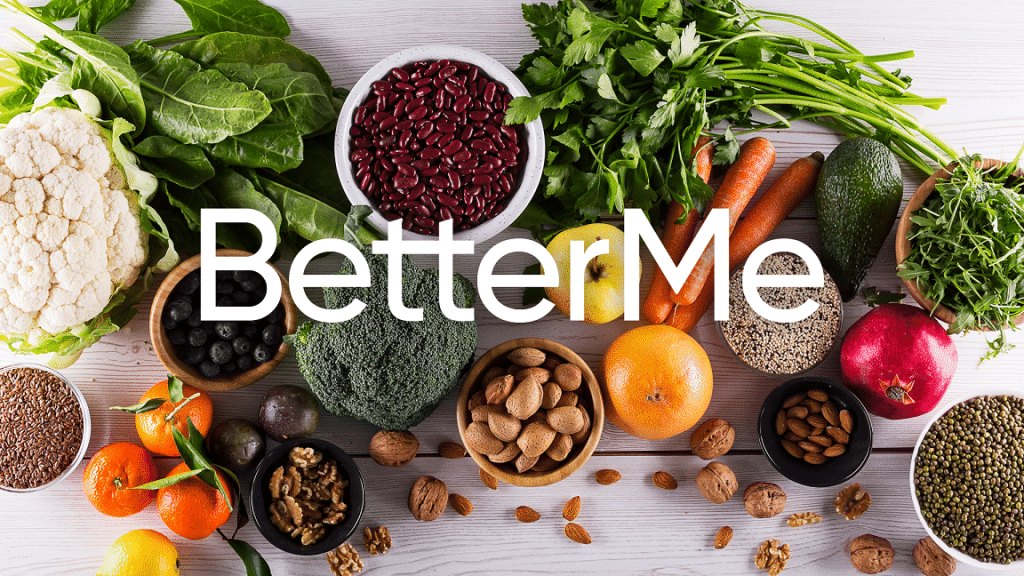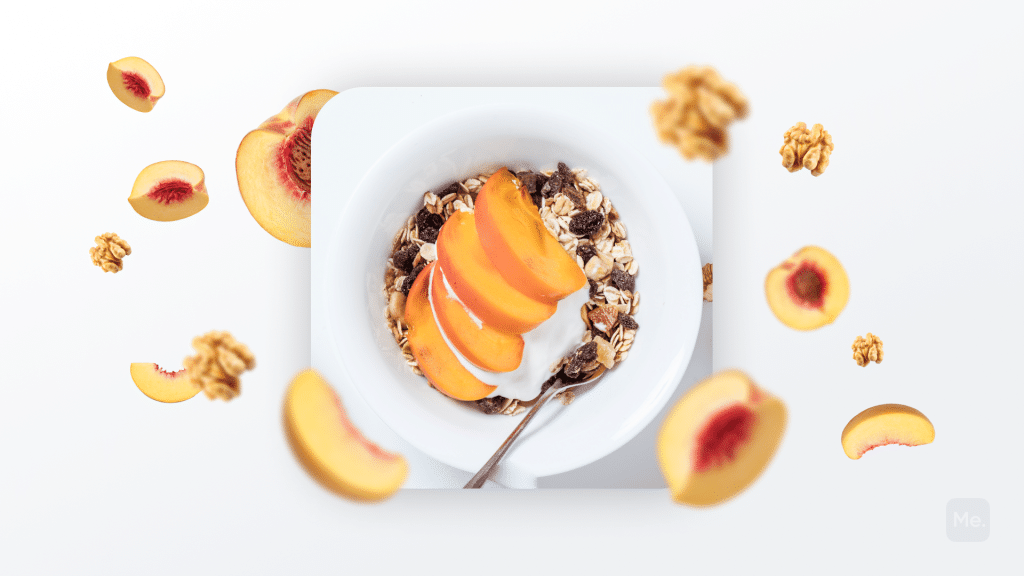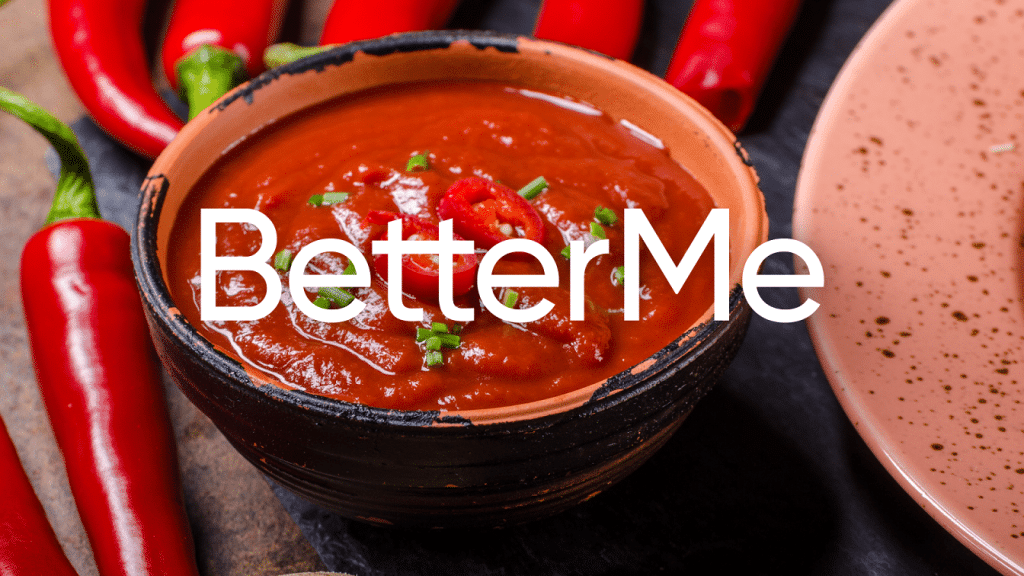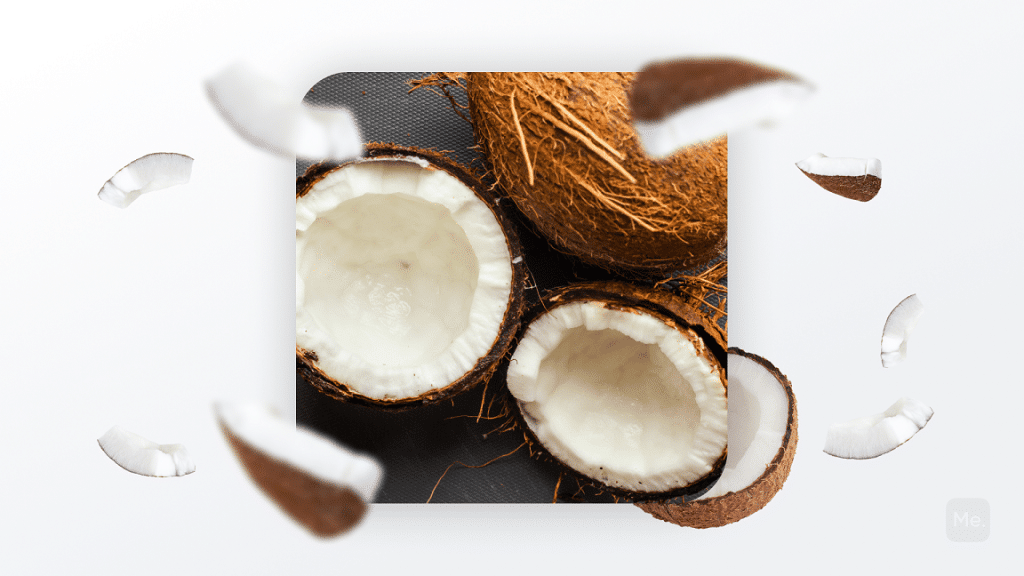Kapha Diet
The kapha diet consists of a wide range of nutritious foods offering many health benefits. Most importantly, since it’s an Ayurvedic diet, it caters to a holistic approach to health that also includes meditation and exercise. Before engaging in this process, you should understand that Ayurvedic diet is not only about food intake: it is mostly a lifestyle and philosophy that some people adhere to.
To understand how beneficial it is, you first need to understand the concept of Ayurvedic diets.
What You Should Know About Kapha And Ayurveda
The kapha diet is one form of Ayurvedic diet. Therefore, it is based on the overall concepts of the Ayurveda medical system.
Here is some background detail on Ayurveda that you need to know.
What You Should Know About Ayurveda
Ayurvedic medicine has a long history of use in India, going back thousands of years (3).
Ayurveda as a medical system aims to create a wholesome balance of mind, body, and spirit. Ayurvedic practitioners utilize such remedies as meditation, diet, exercise, herbal medicines, and physical therapy.
Moreover, the concept of Ayurveda goes beyond the individual.
In Ayurveda, your health is also linked to the environment (17). You’ll notice this when you see the varying food recommendations based on seasons.
But Ayurveda is more than just a medical system.
Ayurveda seeks to define all existence. It affirms that human beings are composed of the same material as the rest of the world, including both living and non-living things.
The holistic approach of Ayurveda is praised to have certain benefits.
For example, various studies show that a wholesome strategy which combines proper diet and exercise is effective in weight management, compared to only exercising (13).
Read More: Yogic Diet: Keep Your Body Nourished And Your Mind Clear
Kapha Dosha Diet And Ayurveda
As stated earlier, the kapha dosha diet is one form of Ayurveda diet.
Kapha is one major classification within Ayurveda. The two other classifications (humors/ doshas) are pitta and vata (22).
These doshas arise from different combinations of 5 key elements in Ayurveda:
- kapha (a combination of earth and water)
- pitta (a combination of water and fire)
- vata (a combination of air and space)
The doshas can be used to classify both living and non living things. Therefore, they are also used to classify different types of diets and even human beings. This is based on the understanding in Ayurveda that every living and non living being has a predetermined ratio of the five key elements.
Maintaining that predetermined ratio ensures balance.
Changing that ratio causes an imbalance.
What Is Kapha Diet?
Based on Ayurveda, kapha body types or the other doshas can be influenced by diet.
Therefore, the kapha diet is basically a diet that preserves balance in people with kapha body types. It’s designed to counteract certain negative aspects of the kapha body type by providing specific positive aspects.
For example, the kapha dosha is characteristically cold, oily, and heavy (23). In which case, the appropriate diet should favor light, warm, and dry foods.
If you’ve been wondering, “Why is kapha diet low fat?” that’s the reason why.
Why The Ayurvedic Diet Kapha?
One key aim of the kapha diet is to spark the metabolic and digestive systems.
So, this diet tends to be lively and full of energy.
Eating warm, cooked meals, which are easy to digest is praised by the Ayurvedic kapha diet. That’s complemented by pungent and bitter flavors that stimulate digestion.
The diet also prescribes appropriate food quantities.
It recommends eating the largest meal at lunchtime, with a smaller meal at dinnertime. On the other hand, kapha body types could skip breakfast since they typically don’t have an appetite in the morning. Instead, you can just stimulate your digestion for subsequent mealtimes by drinking warm lemon and honey water.
The diet goes further to prescribe specific meal schedules.
Kaphas should only eat three meals in a day. Also give yourself three hours between the last meal and bedtime for proper digestion.
Generally, you should eat less than you think you need.
You should also avoid snacking between meals.
Kapha Foods
The kapha diet includes drinks, which should be warm – not cold. You can sweeten such drinks with honey. But you shouldn’t drink too much water.
If starting out on the kapha diet, do it gradually.
By incorporating the kapha diet slowly, you’ll have an easier time adjusting to the dietary changes. You can start by adding more spices to your food, including mustard seeds, chili or turmeric.
Eat as little fat and oil as possible.
You should also avoid cold foods, especially frozen desserts like popsicles, and ice cream. If you have any leftovers, you shouldn’t eat them. Besides, the diet focuses on unprocessed foods, meaning that you shouldn’t eat packaged, bottled, and canned foods.
Instead, focus on freshly prepared foods.
The diet encourages consumption of vegetables and legumes, with smaller quantities of fruits and grains.
Generally, pungent, astringent, and bitter tastes are favored; while sweet, salty, and sour tastes are discouraged. The diet is typically spicy, warm, and dry, as opposed to oily, cold, and sweet.
What Is A Kapha Pacifying Diet?
A kapha pacifying diet is specifically designed to balance the kapha dosha.
The diet is based on the understanding in Ayurvedic medicine that a particular diet can help create a balanced dosha.
But what is a balanced kapha dosha?
When balanced, a kapha dosha body type is praised for exhibiting the following characteristics (4):
- relaxed and strong
- growing thick and wavy hair
- typically heavy-set body
- solid frame and thick bones
- has thick and oily skin
- slow to anger
- slow to act or react
- compassionate and affectionate
- loving and caring
- graceful and forgiving
- calm and easy personality
- usually conservative
These characteristics go beyond the physical features and also apply to the mental state. Since kapha brains are slow and steady, kaphas tend to be methodical in their thinking and action (10). Kaphas also prefer routine but need stimulation to get going.
So, what happens when kapha is imbalanced?
Various physical and physiological aspects characterize an imbalanced kapha, including:
- high cholesterol
- obesity
- diabetes
- allergies and sinus problems
- stomach ulcers
- procrastinating
Therefore, a diet that aims to restore balance in kapha types is referred to as a kapha pacifying diet.
What Foods Are Great For Kapha Diet?
The kapha diet provides specific recommendations on particular foods to eat, and specific foods to avoid (6).
In that regard, here are the foods that are great for kaphas, which you should eat:
-
Fruits:
When considering fruits for the kapha diet, select dried and astringent varieties.
Options include peaches (in moderation), pomegranates, cranberries, grapes (in moderation), cherries, lemons (in moderation), raisins, prunes, apples, pears, persimmons, limes (in moderation), berries, apricots, applesauce, dry figs (in moderation), and strawberries (in moderation).
-
Vegetables:
The kapha diet places a lot of emphasis on vegetables.
That’s a great thing since vegetables are promoted as healthy foods in many food guidelines such as The Dietary Guidelines for Americans 2010 (12). This guideline recommends that fruits and vegetables should make up half of your plate. Vegetables provide vitamins, minerals, and dietary fiber which is linked to decreased cases of obesity and cardiovascular diseases.
With a kapha diet, you should eat raw vegetables in summer and cooked vegetables the rest of the year, or during digestive difficulties.
The diet emphasizes pungent and bitter vegetables such as eggplant, watercress, lettuce, bitter melon, celery, dandelion greens, beets, okra, wheat grass, carrots, garlic, spaghetti squash (in moderation), squash, cabbage, green chilies, corn, fruit and leaves of white prickly pear, parsley, cauliflower, cilantro, rutabaga, broccoli, beet greens, daikon radish, horseradish, turnip greens, sprouts, leafy greens, Jerusalem artichoke, artichoke, radishes, onions, cooked winter tomatoes, asparagus, green beans, leeks, kale, spinach, sweet and hot potatoes, burdock root, mustard greens, peas, turnips, kohlrabi, mushrooms, anise fennel, peppers, and Brussels sprouts.
-
Grains:
Grains can be eaten in their seed form or used to make breads. In a kapha diet, toasted bread is preferable since they are drier.
The fact that kapha advocates for whole grains is beneficial to your health, since the fiber content is associated with a reduced risk of coronary heart disease and cancer (2). A high fiber diet is also known for improving digestive health. Whole grains contain such beneficial substances as phenolic compounds, vitamin E, Se, and phytic acid.
You have a wide variety of options to choose from, including: corn, oat bran, amaranth (in moderation), sprouted wheat bread, millet, basmati/ wild rice, wheat meat/ seitan, cold/ dry/ puffed cereal, granola, dry oats, barley, wheat bran, polenta, spelt (in moderation), quinoa (in moderation), Durham flour (in moderation), couscous, crackers, tapioca, muesli, and buckwheat.
-
Legumes:
The dietary fiber in legumes offers similar health benefits as grains.
One study analyzed the health benefits of mung beans, cowpeas, kidney beans, chickpeas, pole sitao, pigeon peas, soya beans, lima beans, green peas, and groundnuts (21). It uncovered various beneficial aspects like good mineral bioavailability (good absorption of minerals in the body), low glycaemic index (doesn’t cause a rapid increase in blood glucose levels), and a cholesterol-lowering effect.
To enhance mineral absorption, soak the legumes as long as possible before cooking.
The available options include hot tofu (in moderation), navy beans, soy sausages, garbanzo beans/ chickpeas, black-eyed peas, dried peas, red and brown lentils, lima beans, tempeh, mung dal (in moderation), tur dal, white beans, black beans, pinto beans, split peas, aduki beans, mung beans (in moderation), and soy milk.
-
Dairy:
Although the kapha diet involves a reduction in dairy intake, it doesn’t completely eliminate dairy from the diet. That’s a good thing since low fat dairy products not only provide valuable nutrients, but could also help protect against prevalent chronic diseases when consumed with moderation (16).
The dairy product options include ghee (in moderation), goat’s milk, buttermilk (in moderation), cottage cheese made from skimmed goat’s milk, unsalted but not aged goat’s cheese, and diluted skim yogurt.
Read More: Milk Diet For Weight Loss: Will The Weight Drop Away?
-
Animal Protein:
The animal protein options are fewer than the plant protein options in a kapha diet. That’s because kaphas can thrive as vegetarians.
However, a few options exist, but you should only eat meat 2-3 times in a week.
The meat sources include rabbit, venison, freshwater fish, eggs, shrimp, white turkey, and white chicken.
-
Condiments:
You can add a range of condiments like horseradish, hijiki (in moderation), sprouts, mustard without vinegar, lemon (in moderation), coriander leaves, dulse (in moderation), chili peppers, black pepper, scallions, spicy mango chutney, and seaweed (in moderation).
-
Nuts:
Most nuts aren’t recommended for the kapha diet, except the charole nut.
-
Seeds:
Just like the nuts, only a few seeds feature in the kapha diet. They include sunflower (in moderation), chia, popcorn without salt or butter, flax (in moderation), and pumpkin (in moderation).
-
Oils:
With this diet, you should only use oils in small amounts.
The oils that are recommended, starting with the most suitable, are: corn (internal and external use), canola (internal and external use), sesame (external use), sunflower (internal and external use), ghee (internal and external use), and almond (internal and external use).
-
Beverages:
You should only take beverages at room temperature or warm – never ice cold.
The options available include carob, apricot juice, berry juice, apple cider, apple juice (in moderation), dry/ red/ white wine (in moderation), grape juice, grain “coffee”, peach nectar, cranberry juice, mango juice, sweet cherry juice, hot and spiced milk chai (in moderation), pear juice, pineapple juice (in moderation), pomegranate juice, spiced black tea, hot and well-spiced soy milk, aloe vera juice, carrot juice, and prune juice.
-
Herbal Teas:
This diet offers quite an extensive range of herbal tea options, including: kukicha, passion flower, comfrey (in moderation), blackberry, burdock, wintergreen, juniper berry, nettle, mormon tea, jasmine, sassafras, dandelion, alfalfa, raspberry, barley, spearmint, lavender, yerba mate, ginger, hibiscus, yarrow, lemon balm, lemon grass, sarsaparilla (in moderation), clove, cinnamon, fenugreek, fennel (in moderation), ginseng (in moderation), peppermint, chamomile, strawberry, red clover, bancha, and chicory.
-
Spices:
You can take practically all manner of spices, except salt. That’s because the kapha diet should not be bland, but must be spiced hot.
The variety of spices include thyme, peppermint, basil, garlic, vanilla (in moderation), bay leaf, almond extract, nutmeg, cardamom, savory, cinnamon, allspice, mustard seeds, tarragon, parsley, cloves, coriander, neem leaves, wintergreen, rosemary, cumin, asafoetida/ hing, fenugreek, star anise, anise, spearmint, pippali, mint, fennel (in moderation), ajwan, oregano, dill, cayenne, caraway, saffron, poppy seeds, marjoram, turmeric, paprika, orange peel, black pepper, and ginger.
-
Sweeteners:
Just like nuts, only a couple of sweeteners are recommended for the kapha diet. While avoiding most sweeteners, you can only have fruit juice concentrate or raw and unprocessed honey.
-
Food Supplements:
Various food supplements are recommended in this diet, like bee pollen, iron, folic acid, royal jelly, amino acids, barley green, vitamin P/ bioflavonoids, blue-green algae, zinc, brewer’s yeast, copper, aloe vera juice, vitamin C, vitamin B6, calcium, spirulina, and magnesium.
When it comes to weight loss, progress is made by inches, not miles, so it’s much harder to track and a lot easier to give up. BetterMe app is your personal trainer, nutritionist and support system all in one. Start using our app to stay on track and hold yourself accountable!
What Foods Are Bad For Kapha Diet?
The foods to avoid may not necessarily be intrinsically unhealthy, but the recommendation to avoid them is based on their suitability to kapha body types (5).
Here’s a sample of the food categories to avoid:
-
Fruit:
The kapha diet prohibits most sweet and sour fruits like avocado, plums, pineapple, papaya, rhubarb, dates, fresh fig, coconut, mangos (for rare occasions), watermelon, kiwi, bananas, oranges, tamarind, grapefruit, and melons.
-
Vegetables:
Although certain vegetable varieties aren’t recommended in this diet, they won’t cause much harm if eaten in small quantities.
The types of vegetables to avoid are mostly sweet and juicy like taro root, pumpkin, parsnips (for rare occasions), sweet potatoes, black or green olives, zucchini, summer squash, raw tomatoes, and cucumber.
-
Grains:
Only a few types of grains should be avoided, such as cooked oats, brown/ white rice, pasta (for rare occasions), rice cakes (for rare occasions), bread with yeast, pancakes, and wheat.
-
Legumes:
Just like grains, only a few legume varieties should be avoided. They include soybeans, cold tofu, soy cheese, soy powder, soy flour, soy sauce, urad dal, kidney beans, and miso.
-
Dairy:
Since the kapha diet discourages intake of dairy, you’ll have to avoid a whole range of dairy products like cow’s milk, soft and hard cheese, sour cream, yogurt with fruit, salted butter, ice cream, unsalted butter (for rare occasions), and plain/ frozen yogurt.
-
Animal Protein:
The fact that many animal protein sources are discouraged by the kapha diet may be a good thing, to some extent. One reason is the modern safety issues and challenges concerning emerging and evolving pathogenic microorganisms that may be potentially resistant to antibiotics (9).
Some of the animal food sources to avoid are lamb, duck, tuna fish, sea fish, dark turkey, beef, sardines, seafood, dark chicken, pork, buffalo, and salmon.
-
Condiments:
You should avoid many types of condiments such as mango pickle, ketchup (for rare occasions), lime pickle, mayonnaise, soy sauce, sweet mango chutney, vinegar, kelp, gomasio, pickles, chocolate, tamari, lime, and salt.
-
Nuts:
Most nuts should be avoided in the kapha diet, including brazil nuts, peanuts, hazelnuts, black walnuts, pecans, coconut, walnuts, soaked and peeled almonds (for rare occasions), pine nuts, filberts, cashews, pistachios, and macadamia nuts.
-
Seeds:
The kapha diet recommends that you avoid such seeds as Psyllium (for rare occasions), Halva, Tahini, and Sesame.
-
Oils:
Although unsaturated oils tend to be healthier than saturated oils, they are more susceptible to oxidation (8). This can potentially produce toxic compounds.
Therefore, you may gain some benefit by avoiding various oils like walnut, avocado, safflower, apricot, coconut, flax seed (for rare occasions), soy, olive, primrose, and sesame.
-
Beverages:
There’s certainly a clear health benefit in avoiding certain types of beverages like hard alcohol, in the kapha diet. Alcohol consumption has been linked to multiple health issues, 100,000 deaths, and $100 billion worth of economic cost in the United States, annually (18).
Various other beverages restricted in the kapha diet include carbonated drinks, chocolate milk, miso broth, cold soy milk, grapefruit juice, sour cherry juice, icy cold drinks, sour juices, almond milk, iced tea, caffeinated beverages (for rare occasions), tomato juice, ice milk, papaya juice, lemonade, coffee, cold dairy drinks, and orange juice.
-
Herbal Teas:
Only a few herbal tea varieties are restricted in the kapha diet. These include marshmallow, licorice (for rare occasions), rosehip (for rare occasions), and red zinger.
-
Spices:
The only restricted spice is salt.
That’s no surprise since salt intake is associated with multiple health problems like systemic hypertension and causing millions of deaths globally, every year (19).
-
Sweeteners:
Contrasted with spices that are nearly all encouraged in the kapha diet, sweeteners are nearly all discouraged. This may potentially benefit your health since sweeteners like molasses may negatively affect your humoral immune response (20).
The sweeteners to avoid include dried or fresh sugar cane juice, ice syrup, maple syrup, white sugar, jaggery, turbinado, molasses, barley malt, and fructose.
-
Food Supplements:
The kapha diet features such food supplements as Vitamin B1, potassium, Vitamin B12, Vitamin B2, Vitamin D, Vitamin A, and Vitamin E.
If you wish to free yourself from all the extra pounds that have been weighing you down for way too long, start using the BetterMe app and overhaul your entire life!
What Diet And Exercise Is Best For Kapha?
Since Ayurvedic medicine supports holistic healthy living, you should certainly complement a kapha diet with an overall healthy lifestyle.
By complementing the right kapha diet recipes with an appropriate workout plan, you can achieve more health benefits.
To start with, here is a typical exercise plan for kaphas.
Kapha Exercise Plan
For kaphas, a good exercise plan should include variety within a predefined routine (11). That’s because kaphas normally get stuck in a rut. Therefore, you need an infusion of novelty and excitement.
But it doesn’t have to be a complex thing.
You can simply try a new route to work, or plan a vacation to a new destination.
Here’s a simple plan you can follow throughout the day, so you can have a good bit of physical activity.
Morning
Wake up before 6 a.m. Then drink a glass of warm water to activate your body.
Next, meditate for 10 minutes or longer.
Before you take a bath, massage your body with a light, warming oil like sunflower or safflower.
When picking out your clothes, select bright colored outfits like orange, yellow, or red. These are kapha-balancing tones, which you can also apply in your environment and interior furnishing.
At this point, a 10-minute yoga sequence will kick-start your day’s physical workouts.
After that, you can enjoy a healthy breakfast.
Now you’re ready to go about your morning work and perform other activities.
Sip on warm, ginger tea throughout the day, which is invigorating for Kapha.
Mid-Day
Schedule your lunchtime between noon and 1 p.m.
Eat slowly and mindfully to help digestion. This also helps you know when you’re full. After eating, sit quietly for about five minutes.
Thereafter, walk for 5-15 minutes to enhance digestion.
Once you’re ready, proceed with your afternoon work activities, but avoid taking an afternoon nap.
Try to exercise everyday with such simple workouts like bicycling, running, dancing, or swimming. Even 20 minutes is enough; however, kaphas benefit more from longer workouts. Therefore, aim for 45-60 minutes of exercising so you break a sweat.
Another option is participating in competitive sport.
You may also consider outdoor activities that have an element of risk like sea kayaking, rock climbing, or white-water rafting.
Finally, set time to meditate around sunset.
Evening
Dinner time should be a light meal before 7:00 p.m.
After eating, sit quietly for five minutes, and then take a 5- to 15-minute walk to aid digestion.
If you tend to snack in the evening in front of the TV, try to do a few stimulating activities instead. Such activities can include joining a group, or going to a comedy club.
At bedtime, wind down for sleep 30 minutes before bed. You can have a relaxing, warm bath with aromatic oils like rose or vanilla.
By 10:30 p.m., you should be asleep with the lights off.
Kapha Diet Plan
Let’s start with a useful overall kapha diet plan.
This kapha diet plan/ kapha menu plan provides a useful guide for the meals you can eat in a day (1).
It also shows meals prescriptions for different seasons: spring/ summer and fall/ winter.
-
Breakfast:
In spring/ summer, take liquorice root and ginger tea.
In fall/ winter, eat a grain dish plus ginger tea. You may also take a honey, lemon, and ginger mix.
-
Snack:
In spring/ summer, eat a sour treat like cranberries with herbs and spices.
In fall/ winter, take fresh peaches or apricots with a spicy sauce.
-
Lunch:
In spring/ summer, have a meal made of fresh celery soup, sprouted barley in sauce, cauliflower rice with Thai ginger sauce, black-eyed pea succotash, or fresh green salad and pomegranates.
In fall/ winter, eat soaked buckwheat with a fresh Brussels sprouts salad, fresh kale/ collard salad and lemon or lime dressing, flax seed crackers and sprouted grain with aduki bean, or Thai style cauliflower rice and ginger sauce.
-
Snack:
In summer/ spring, eat raspberries or lemongrass tea.
In winter/ fall, take pumpkin seeds, almond milk, a cup of saffron, or herbal tea.
-
Dinner:
In summer/ spring, eat zucchini pasta in fresh tomato sauce, Jerusalem artichoke and cauliflower in spicy cilantro sauce, cauliflower fried rice, burdock and root vegetable stir fry in curry and cumin sauce, or mung lentils plus atta chapattis.
In winter/ fall, eat adzuki beans and Mexican sprouted Ezekiel wraps, quinoa patties and spicy relish, or stir-fry root vegetables in coriander dipping sauce.
-
Snack:
In summer/ spring, eat a cranberry dessert.
In winter/ fall, eat sour apples and drink chamomile tea.
Based on this diet plan, here are some recipes that you can try out for different meals.
Kapha Diet Recipes
Due to the wide range of kapha food options, there are many kapha diet recipes that you can try out.
Lemon Coriander Soup
The lemon coriander soup is a bright, clean, and healthy soup which can be a great mid-day snack (15).
This recipe serves 4 people.
The ingredients are:
- 1/3 cup diced carrot
- 750 milliliters (3 cups) vegetable stock
- ¾ cup shredded cabbage
- juice from half a lemon
- 4 drops (0.2 mL) sesame oil
- ½ cup chopped cilantro leaves
- salt and white pepper added to taste
Follow these preparation steps:
- Mix the cabbage, vegetable stock, and carrot in a saucepan.
- Bring the mixture to a boil.
- Add white pepper and salt to taste. Then stir in lemon juice.
- Add the chopped cilantro.
- Garnish with a bit of sesame oil, if you desire.
Brown Rice Khichdi
A brown rice Khichdi meal packs a nutritious punch (7). The combination of brown rice, lentils, ginger, veggies, cilantro, and spices make it a delicious and healthy meal that you’ll enjoy.
This recipe serves 4 people.
The ingredients are:
- ¾ cup brown rice
- ¾ cup yellow lentils
- ⅓ teaspoon ground turmeric
- 6½ cups (52 fl oz) water
- ⅓ cup carrots (finely diced)
- ⅓ cup fresh/ frozen peas
- 1 tablespoon ghee
- ⅓ cup small cauliflower florets
- 1 teaspoon cumin seed
- 2 teaspoons minced garlic
- 3 tablespoons minced ginger
- ¼ cup roughly chopped cilantro
- ½ Serrano chili (finely diced)
- ground cumin for garnishing
- salt and pepper added to taste
- plain yogurt (optional)
- chutneys (optional)
The preparation steps are as follows:
- Rinse and drain the brown rice as well as the yellow lentils (do this 3 times).
- Place the rice and lentils in a saucepan, then add water, turmeric, and a pinch of salt.
- Bring the mixture to a boil.
- Reduce the heat and maintain a steady simmer.
- Cook while stirring often until the rice and lentils are tender.
- Add the carrot, cauliflower, and peas, and then cook for 10 minutes.
- Check that the veggies are tender before turning off the heat.
- Using a sauté pan or Dutch oven, heat your ghee on medium heat.
- Add whole cumin seeds to the ghee and let it crackle for 30 seconds.
- Also add chili, ginger, and garlic to the ghee and sauté for 30 seconds.
- When the ghee sauté starts to brown, add in the lentil and rice mixture.
- Pour in water to get a thick porridge consistency.
- Finally, add salt and pepper to taste.
- Serve the meal with ground cumin, chopped cilantro, yogurt, and chutneys.
Mung-Dal And Spinach Flavored With Garlic
This mung-Dal and spinach recipe is made even healthier with the addition of garlic. Garlic even offers potential medicinal benefits (14).
The ingredients to use are:
- 1 cup whole mung dal
- a fresh bunch of chopped spinach
- 2-3 cloves of diced garlic
- 2 teaspoons of turmeric
- 2-3 tablespoons of ghee or cooking oil
- a few flakes of asafetida
- 1 dried red chili
Follow this preparation process:
- Boil the mung beans in half a liter of water until tender.
- Heat a frying pan and add the cooking oil/ ghee.
- Add asafetida, chili and, lastly, turmeric power to the ghee/ cooking oil.
- Add the spinach and the spice mix from the frying pan (tempered spice) to your cooked dal.
- Let it sit until the spinach is wilted, then add salt to taste.
- Serve hot in a bowl.
DISCLAIMER:
This article is intended for general informational purposes only and does not address individual circumstances. It is not a substitute for professional advice or help and should not be relied on to make decisions of any kind. Any action you take upon the information presented in this article is strictly at your own risk and responsibility!
SOURCES:
- A Food Plan to Balance Kapha Dosha (2015, static1.squarespace.com)
- Antioxidants and hormone‐mediated health benefits of whole grains (2009, tandfonline.com)
- Ayurveda (n.d., cancer.gov)
- Ayurveda: Controversies and the Need for Integration with Mainstream Medicine (2017, journals.library.columbia.edu)
- Ayurvedic Concept of Food and Nutrition (2006, opencommons.uconn.edu)
- Ayurvedic Cooking for Self Healing (1997, books.google.com.ua)
- Brown Rice Khichdi (n.d., goop.com)
- Challenges of Utilizing Healthy Fats in Foods (2015, ncbi.nlm.nih.gov)
- Challenges to meat safety in the 21st century (2008, sciencedirect.com)
- Dosha brain-types: A neural model of individual differences (2015, ncbi.nlm.nih.gov)
- Get Energized: A Daily Balancing Routine for Kapha (2014, chopra.com)
- Health Benefits of Fruits and Vegetables (2012, academic.oup.com)
- Increased Physical Activity Associated with Less Weight Regain Six Years After “The Biggest Loser” Competition (2017, onlinelibrary.wiley.com)
- Kitchen Pharmacy: Garlic for Ayurvedic Recipe (2010, opencommons.uconn.edu)
- Lemon Coriander Soup (n.d., goop.com)
- Milk and dairy products: good or bad for human health? An assessment of the totality of scientific evidence (2016, tandfonline.com)
- Nutritional Theory in Ayurveda (2004, liebertpub.com)
- Patients with Alcohol Problems (1998, nejm.org)
- Salt addiction: A different kind of drug addiction (2006, sciencedirect.com)
- The effect of sugar cane molasses on the immune and male reproductive systems using in vitro and in vivo methods (2016, ncbi.nlm.nih.gov)
- The potential health benefits of legumes as a good source of dietary fibre (2010, cambridge.org)
- Understanding personality from Ayurvedic perspective for psychological assessment: A case (2011, ncbi.nlm.nih.gov)
- What’s Cookin’? Kapha-Friendly Nutty Broccoli Soup Recipe (2014, chopra.com)



